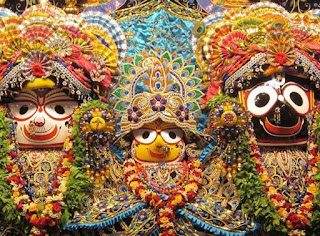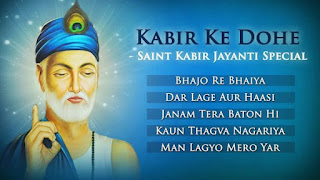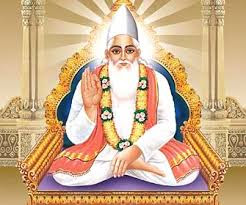Jagannath Rath Yatra is one of the most awaited and much-celebrated festival in Orissa as well as countrywide. It is dedicated to Lord Jagannath i.e. Lord Krishna, his sister Goddess Subhadra and his elder brother Lord Balabhadra. Commonly known as Gundicha Yatra, Dasavatara, Chariot Festival or Navadina Yatra, it is celebrated every year in the month of June or July. For this, the Puri Rath Yatra sees 4-5 lakh pilgrims every year. Indians, as well as foreigners, flock in large numbers to get a glimpse of the idols in the chariot. It is believed that those who manage to get a glimpse of the idols will have a prosperous year ahead.

The Yatra begins when three richly decorated chariots resembling temple structures are pulled through the streets of Badadanda in Puri. Devotees from all over the world assemble in Puri with an earnest desire to help pull the Lords' chariots along with the priests and their fellow devotees. This is considered to be a pious deed, and people even risk their lives in the huge crowd for the chance to serve the Lord. This is the only day when devotees who are not allowed in the temple premises, such as non-Hindus and foreigners, can get their glimpse of the deities. The huge processions accompanying the chariots play devotional songs with drums, tambourines, trumpets and other such instruments, making this procession a vibrant affair. The Ratha carts themselves are some approximately 45 feet (14 m) high and are pulled by the thousands who congregate at Puri for this annual event from all over the country and abroad.
Snana Mandal ceremony of Rath Yatra
So, this is the month of the sacred Chariot festival or the Jagannath Puri Rath yatra and the preparations are in full swing. Though the main festival lasts for a week but the celebrations take complete one month and Snana Mandal is a major ceremony before the Rath Yatra commences. The ritual, a prelude to the annual Rath Yatra on July 14 2018.
Schedule of Snana Mandal ceremony prior to the Rath Yatra
Deities of Lord Jagannath, Lord Balabhadra and Devi Subhadra would begin at about 4 am and would be completed by 6 am. It will be followed by their bathing in 108 pitchers of aromatic water would begin by 9.30 am. The Snana ritual likely to be completed by 12 noon After Chhera Pahanra, Trinity would be dressed in ‘Hati Besha’. Public would be allowed darshan from behind barricades till late in the night. Deities will retire to sick room for fortnight after the ritual.
Beginning of the Chariot festival from Jagannath temple
This year the yatra is to begin on June 25 where Lord Jagannath with siblings Lord Balabhadra and Devi Subhadra will be taken in three giant chariots to the Gundicha temple for their fun filled week long stay. Located about three km away from the Jagannath Temple at the end of Bada Danda or the Grand Avenue, Gundicha Temple is named after Queen Gundicha, the wife of King Indradyumna who built the Puri Jagannath Temple.
Importance of significance of Chariot festival or Jagannath Yatra
It is believed that when Krishna was being cremated in Dwarka, his elder brother Balrama was so much in grief that he jumped in the ocean with Krishna’s partially cremated body. Subhadra, their sister too followed him. At the same time, King Indradyumna of Jagannath Puri had a vivid dream where he learnt that he will find the lord’s body floating on the shores of Puri and that he should build a grand temple to house the three deities inside it. And his dream did come true as he found the bones of Krishna who is also Jagannath in Puri and he built a temple after the murtis of the two brothers and sister were carved by Vishwakarma, the architects of the gods.
Scenario at the Chariot festival in Jagannath, Puri
The chariots are huge wooden vehicles made to resemble the temples. Decorated as per rituals followed for centuries, each of the chariots has a name of its own. While the Lord travels on his Nandighosa, Lord Balabhadra’s vehicle is called Taladhwaja and chariot of Goddess Subhadra is known as Dwarapadalana or the ‘trampler of pride’. Multitudes turn out to join the Lord in his sojourn and keep him company during the days of the festival. It is the only time when non-Hindus can get a glimpse or touch the Lord as non-Hindus are barred from entry into the temple.
About Chariots or Raths
Undoubtedly, the chariots or 'Raths' are the focal point of the procession in Puri. There are three main chariots carrying three deities that are a part of the celebration. All the three chariots are made of wood and decorated by local artists. Lord Jagannath's chariot is the biggest of the three having 16 massive wheels and a height of 44 feet. While Lord Balabhadra's chariot has 14 wheels and a height of 43 feet followed by Goddess Subhadra's chariot having 12 wheels and a height of 42 feet.
The first one of them is the Nandighosa Rath, which is the holy seat of Lord Jagannath himself who is accompanied by Lord Madan Mohan. The wagon is guarded by Garuda while the charioteer is Daruka. This Ratha stands out with its yellow and red decorative clothing as these are the favourite colours of the Lord. This Ratha is also called Garuda dhwaja Ratha or Kapila Ratha. Other deities in this chariot include Varaha, Gobardhan, Krishna, Gopi Krishna, Nursingha, Rama, Narayan, Trivikrama, Hanuman and Rudra.

The second Ratha is the Taladhwaja Rath and the presiding deity of this chariot is Lord Bala Bhadra. The accompanying deity is Lord Rama Krishna, and this wagon is embellished with red and blue-green clothes. Basudev stands guarding this chariot, while the charioteer is Matali. Other deities in this Ratha include Ganesh, Sheshadeva, Mukteswar, Natamvara, Mrutyunjaya, Hatayudha, Pralambar, Sarvamangala and Kartikeya.
Smallest of the three chariots is the Darpadalana Ratha which belongs to Lord Jagannath's sister Goddess Subhadra. Adorned with red and black colour clothes, this chariot is guarded Jayadurga and the charioteer is Arjuna. This Ratha also carries Vimala, Mangala, Shyamakali, Varahi, Shulidurga, Vanadurga, Ugratara, Chamunda and Chandi.
Return journey of Lord Jagannath
On their return journey, the trio stops at the Mausi Maa Temple or the shrine dedicated to their aunt. Situated mid-way on the Bada Danda or the Grand Avenue in front of the Jagannath Temple, the Mausi Maa temple is dedicated to Goddess Ardhashini. During their brief stopover at Mausi Maa temple, the three deities partake of an offering called ‘Poda Pitha’, a kind of pancake favoured by the Lord and generally eaten by the poor.



































